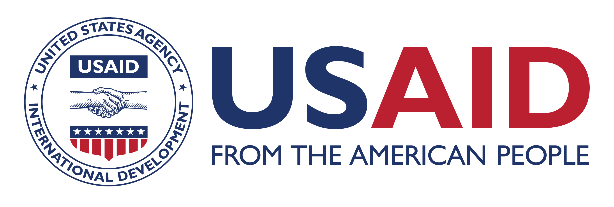
Resource Library
Organizational Response to HIV/AIDS and TB in the Workplace
Ethiopia is one of the countries with the highest HIV infection rates in the world. According to a recent report from the Ministry of Health (MOH 2004), the 2003 estimate of persons living with HIV/AIDS in Ethiopia was 1.5 million including 96,000 children. The highest number of AIDS patients (69%) was seen in the 20-39 year age groups. In a country like Ethiopia, where the majority of the population is young and active, HIV/AIDS prevention and care programs initiated and/or linked at workplaces would make huge contribution in bringing behavioral changes in terms of risk reduction for HIV/AIDS, as well as providing care for those in need. Abt Associates Inc. together with Global Microenterprise Initiative, IntraHealth International Inc., Population Services International, initiated a workplace HIV/AIDS program in Ethiopia in October 2004, with the objective of expanding the knowledge of, and access to, affordable, high quality private sector HIV/AIDS and TB services. A key step in the project approach involves identifying large companies in Ethiopia and assessing how they are responding to HIV/AIDS and TB in the workplace. Variables such as the existence of workplace HIV/AIDS policies, provision of information on HIV/AIDS and TB, availability of HIV related services such as STI, VCT, provision of support for employees who are HIV-positive and orphans, education on correct and consistent use of condoms, management and labor union support, collaboration with the community and government; and availability of monitoring and evaluation mechanisms were collected. Both quantitative and qualitative methods of data collection were applied to collect information from twenty five companies selected based on sector representation, geographic coverage and employees size. The quantitative data was gathered by interviewing managers and HIV focal persons of the organizations including clinic heads to gather information related to HIV/AIDS using an assessment protocol prepared for the purpose. The qualitative data was gathered through observation and in-depth interviews to capture key information on cross cutting issues such as stigma & discrimination and gender. Overall, the assessment revealed that twenty of the twenty five companies assessed do not have workplace HIV/AIDS policy. The current education programs have limitations in that sessions are conducted intermittently; education methodology uses a one-way communication; and sessions are not need-based or target-group focused, the distribution and use of the IE/BCC materials is limited in terms of bringing the desired behavioral change. All organizations assessed make condoms available in the workplace on a regular basis. Most of the companies provide basic health services including VCT, STI, and TB, both on site and through arrangements with public and private health facilities. Twenty three companies have committees to oversee HIV/AIDS activities. Although there are no properly recorded HIV/AIDS and TB related costs, most companies feel that absenteeism due to illness is a major concern. No sign of stigma and discrimination was witnessed in the companies; and disclosing HIV status is not common. Special consideration is not given for gender specific issues about HIV/AIDS while planning and designing policies. Most companies monitor HIV/AIDS related activities as part of the clinic health report and include in annual work plans as part of employees' health benefit. Based on these findings recommendations were forwarded to enable managers to understand the status of their existing HIV/AIDS ad TB programs, consider options to extend the coverage and quality of these services and inform management, employee and employee representatives the rational to initiate or expand workplace HIV/AIDS prevention programs.
Resource Type : Report
Country : Ethiopia
Year : 2005-08-01T15:00:00
Language : English
Project : SHOPS


